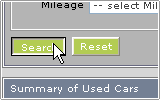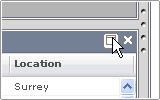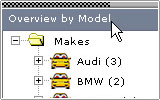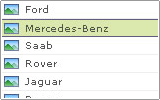Seamless data updates A Webcentric application is loaded into a single HTML (or equivalent) page and AJAX controls the navigation between screens and updating of data from that point onwards. These updates are seamless, unlike those in conventional web applications, which rely on the browser continually refreshing the entire web page.
A Webcentric application is loaded into a single HTML (or equivalent) page and AJAX controls the navigation between screens and updating of data from that point onwards. These updates are seamless, unlike those in conventional web applications, which rely on the browser continually refreshing the entire web page.
Portlet approach The Framework offers improved usability by implementing a ’portal-approach’, rather than the typical ’web-flow’ approach of building conventional internet applications. Instead of navigating through a series of screens (and having to go back to the first screen for each new task) a user can select a screen (portal) and quickly access any sub-component, or ’portlet’, associated to it.
The Framework offers improved usability by implementing a ’portal-approach’, rather than the typical ’web-flow’ approach of building conventional internet applications. Instead of navigating through a series of screens (and having to go back to the first screen for each new task) a user can select a screen (portal) and quickly access any sub-component, or ’portlet’, associated to it.
Customisation of workspace
This empowers the user by giving them the choice to customise their workspace, according to personal preferences. A rich set of GUI functionality is provided in the form of resizing, ’drag and drop’ and toggling the visibilty of individual components on the screen.
Scalable layout
Webcentric offers powerful layout management functionality, through the concept of 'framesets'. They can be used alone, or in combination, to create complicated application structures which scale to the available screen space.
Pre-built set of core widgets The Framework includes a sophisticated set of pre-built widgets for navigation and displaying data, such as the treeview and grid. The Grid, for example, supports comprehensive AJAX support (as a framework component); column resizing and ordering; selection of single and multiple records; keyboard control to navigate records.
The Framework includes a sophisticated set of pre-built widgets for navigation and displaying data, such as the treeview and grid. The Grid, for example, supports comprehensive AJAX support (as a framework component); column resizing and ordering; selection of single and multiple records; keyboard control to navigate records.
Application state persisted
Each instance of a Webcentric application is an XML document which fully describes the User Interface and Data Bindings which form the application. This document updates continually as the user interacts with the GUI, always reflecting the current state of every aspect of the interface. At any point in time, a reloadable 'snapshot' of the application can be taken and saved to the server.